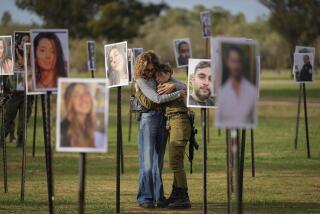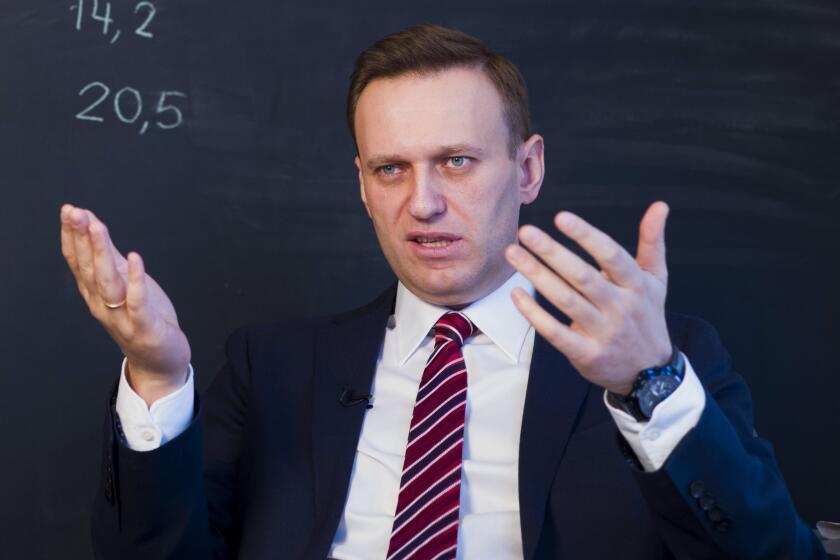In Syria, fear and violence recall dark days of 1980s
As the Syrian uprising extends into its ninth month, a cycle of detentions and missing people amid a violent crackdown is playing out like a tragic case of deja vu.
Syrian President Bashar Assad has been employing the same tactics that his father, Hafez Assad, used 30 years ago when a Muslim Brotherhood uprising was met with mass detentions, imprisonments that would ultimately span decades and, finally, the massacre of at least 10,000 people in the city of Hama.
Then as now, fears about detentions permeate those moments when errands run long, people don’t come home when expected or phones go unanswered. The Syrian Observatory for Human Rights, based in London, estimates that more than 45,000 people have been detained, although Amnesty International puts the number at 13,000 or more.
“No one dares ask about them, except in indirect ways,” said Dima, a Damascus-based activist who was using an alias for safety reasons. “If anyone asks about his son, he will be questioned, and he can be detained. The only way we are hearing about people who are being detained is when a friend in prison is released.”
It was the same three decades ago, she said, when few dared to ask openly about missing loved ones.
“Of course, the people are saying that this is a repetition of the previous crisis,” Dima said. “The situation of the ‘80s is repeating in the same way.”
Syrian activists initially had hoped to avoid reliving history by organizing a different uprising that would be characterized by peaceful protests, attempts to cut across sectarian lines and, in the early days, demands for reform rather than a leadership ouster.
But painful parallels with the past became undeniable this summer, the day before the Muslim holy month of Ramadan began, when security forces laid siege to Hama and killed dozens of people.
Now talk of history repeating itself is a common topic of discussion, Dima said.
“These tactics are played and replayed. These are the tactics they know; they are not very imaginative,” said Murhaf Jouejati, a professor of Middle East studies at the National Defense University in Washington. “They employ the playbook, they go to the instructions guide, so they are repeating the same behavior that they have been taught.”
Indeed, a recent list compiled by activists of the methods of torture being used against detained Syrians now reads like a stolen script from the prison stories that were told by the earlier generation.
Othman Sahiouni’s brother, Bassam, was grabbed by security forces May 7. For months the family didn’t know where Bassam was or even whether he was still alive, and they could not ask for official information without risking another family member being seized.
News eventually came back from a released prisoner that Bassam was in a jail in Homs. He had been tortured, the family learned, and when he tried to go on a hunger strike authorities broke his arm.
Now the family waits for other prisoners to be released to get an update on Bassam’s condition.
“The same crisis [as in the ‘80s], the same killing, the same mass graves. Nothing has changed,” Othman Sahiouni said. “Everyone has an extreme sense of fear; the children, the women, the men.”
And as protests against the regime grew in recent months, Assad gave lip service to plans for peace proposed by the Arab League and others while cranking up the violence against dissidents. The league finally suspended Syria, one of its founding members, and levied sanctions against it.
Amr Al-Azm, a professor of history at Shawnee State University in Portsmouth, Ohio, who was in Cairo last month for meetings of the opposition Syrian National Council, said the government’s tactics were not surprising.
“They say, ‘When this happened, we did this and we survived. This is not the time to try new things,’” Al-Azm said. “This is an ongoing cycle of the regime; it never really stops.”
As the Assad government continues to follow its lethal playbook, the opposition’s response also has begun to resemble the armed uprising of 30 years ago as army defectors join the Free Syrian Army, resulting in a rise of attacks on security forces and government buildings.
But the move toward an armed struggle, stemming from frustration over a death toll that the United Nations estimates to be more than 4,000, could weaken international support for the opposition.
Last month, the foreign minister of Russia, an ally of Syria, said the unrest was beginning to resemble a civil war. The comments were echoed a day later by U.S. Secretary of State Hillary Rodham Clinton.
There are serious concerns for Syria’s future, given the brutal way the previous uprising was finally crushed. In Syria, meanwhile, activists report that more people are being killed by torture in the prisons, with families learning their fates only when they are called to retrieve bodies. Relatives are often forced to sign papers placing the blame for the death elsewhere.
“Every day killing, killing, killing,” said Ahmad Sharbaji, who has two brothers in detention.
Sharbaji’s brother, Yahya, was arrested in early September along with another activist, Ghaith Matar. A few days later, Matar’s badly tortured body was released.
The Sharbaji family has yet to hear any news about Yahya’s whereabouts. Some recently released prisoners, however, were able to relay that Ahmad Sharbaji’s other brother, Maan, was in the prison clinic being treated for undisclosed injuries.
“No one in Syria can ask about the detained,” Sharbaji said. “Who is going to answer you? There is no one to answer you. … It’s like it was in the ‘80s.”
More to Read
Start your day right
Sign up for Essential California for news, features and recommendations from the L.A. Times and beyond in your inbox six days a week.
You may occasionally receive promotional content from the Los Angeles Times.






